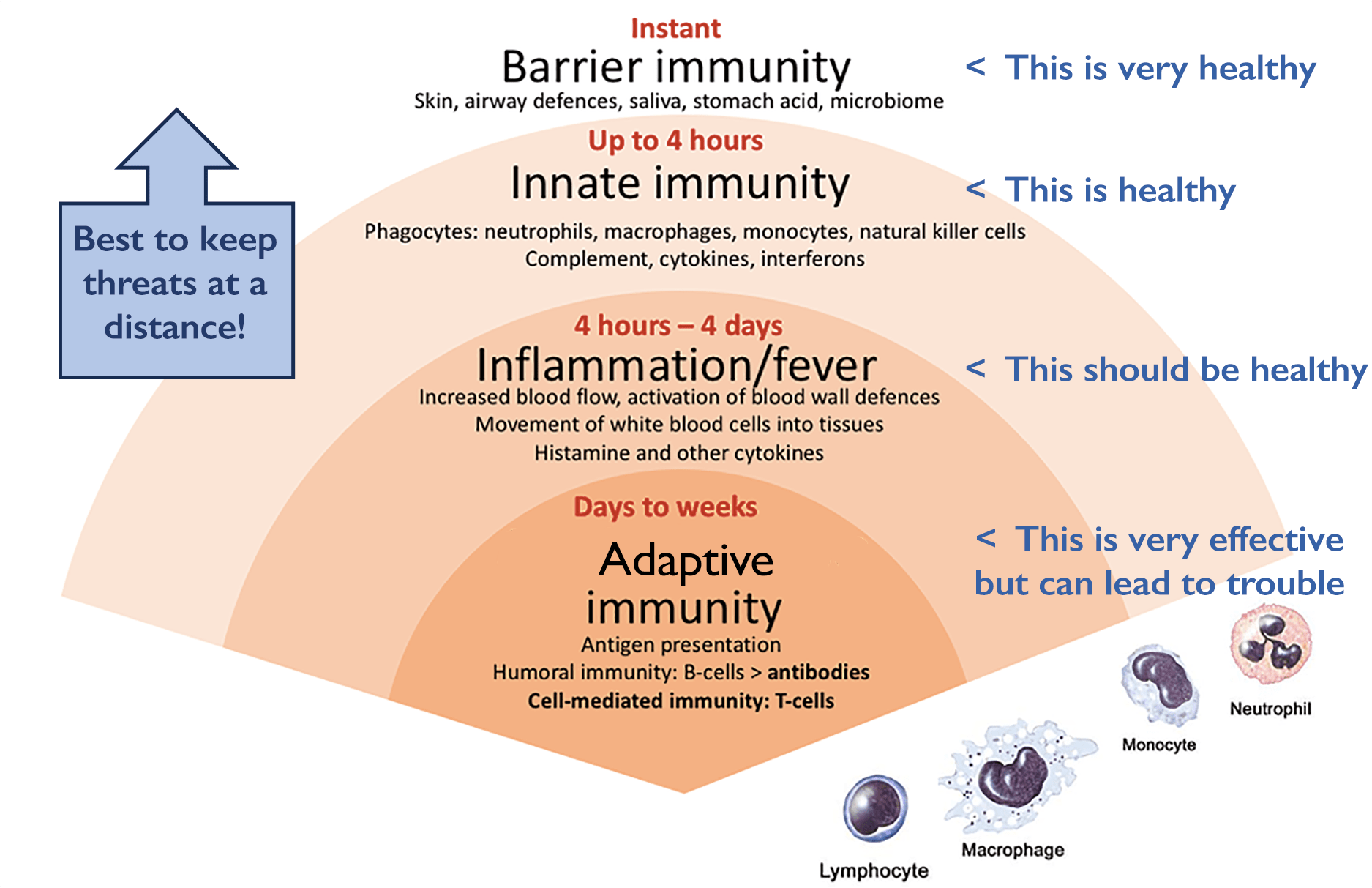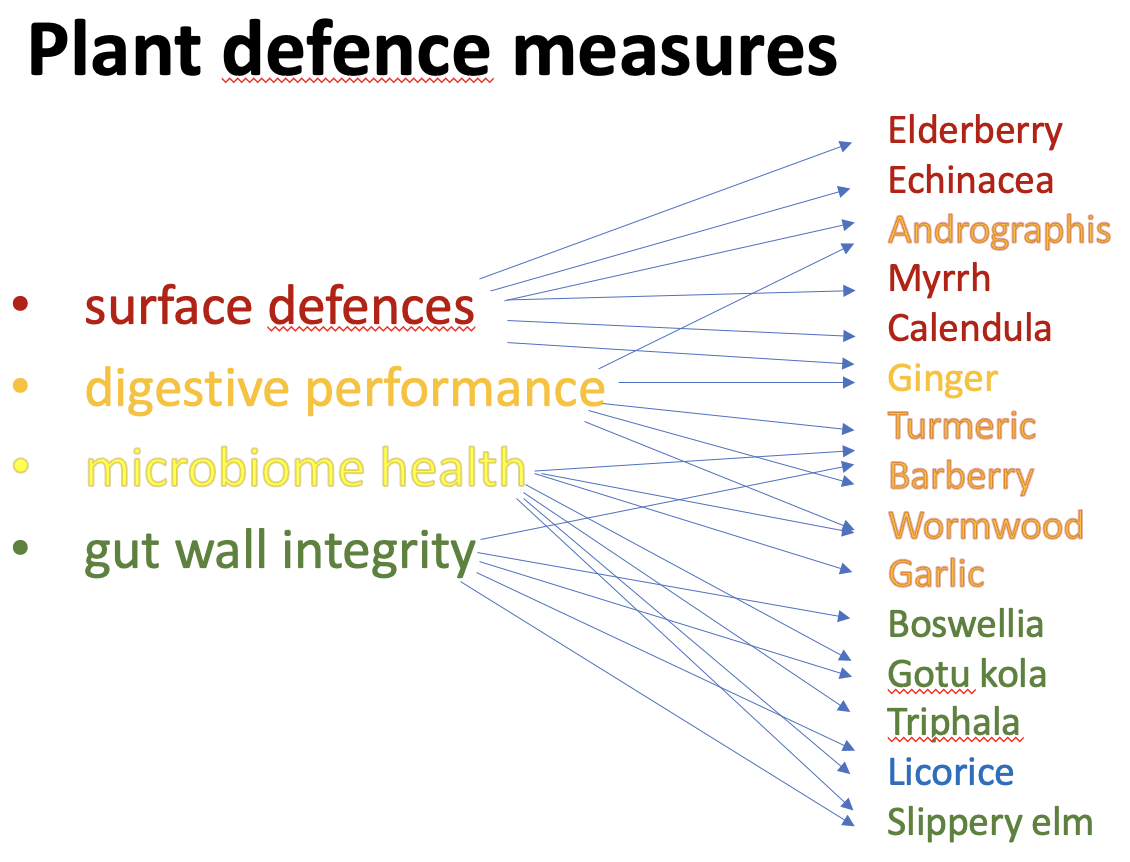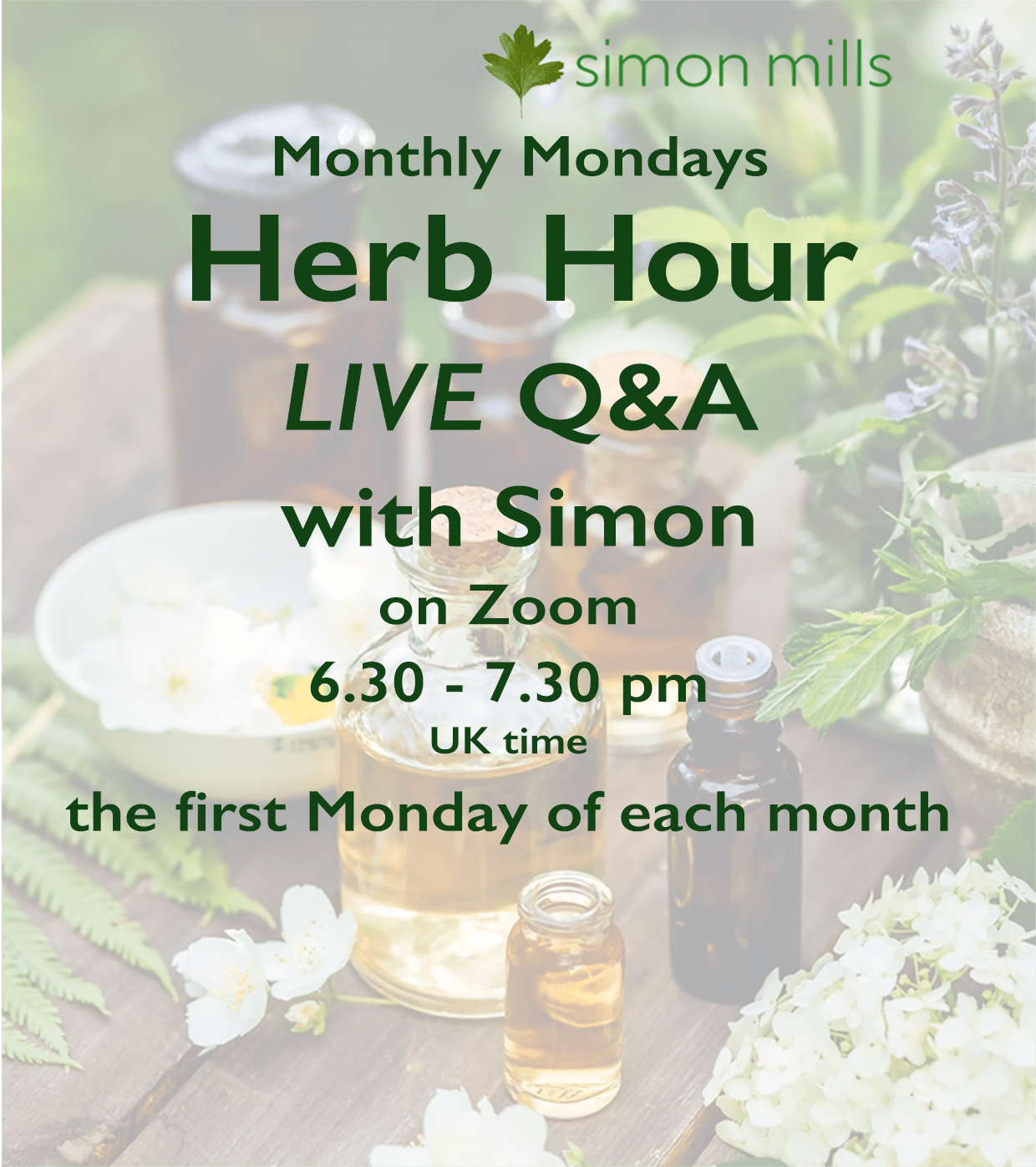We can now apply the previous orientations to the most effective use of plant remedies for immune problems. These approaches combine latest insights with what has worked best in years of practice.
IMPORTANT SAFETY NOTICE.
Please read this before proceeding to use any of the remedies below.
NOTE: many references to remedies below link to their detailed monographs in our partner site Herbal Reality. This is a comprehensive resource on all herbal matters. More information about using the remedies will also follow in our future posts.
If you would like Simon’s help in adapting the remedies in these posts to your own needs, then consider signing up to our Masterclass programme
FIND OUT MORE >
We can best understand our approach to immunity as a diagram that shows the tiers of defence. Think of these like the pallisades and ditches protecting a castle, with intruders best deflected at the outer reaches and the goal to avoid the fight getting into the core arsenal.

In this view the most effective defences are the functions of barrier immunity, including the skin and its microbiome, mucous membranes, the ‘mucociliary escalator’ that brings inhaled material up the airways from the lungs, saliva, the digestive juices and our mouth and gut microbiome. All these work instantly and mostly quietly.
If the barriers are breached then with a delay of several hours, our ‘immune vanguard’, innate immunity steps up. This is what these white blood cells do all the time and again mostly without symptoms, although lymph glands, tonsils and appendix can become enlarged and painful if there is a big battle.
By understanding these levels of engagement with immunity it is clear that the best way to use herbs is in supporting the outer tiers, and as far as possible reduce involvement of adaptive immunity, involving antibodies and T cells.
The strategies can be summarised under the following headings
Improving surface defences and maintaining gut wall integrity. Herbs have been used since prehistory for wound repair and work particularly well as healing agents. They also have a direct effect on mucosal surfaces in the mouth, throat, and down the digestive tract. Herbs with with high resin levels (such as myrrh, boswelia and calendula), or astringent properties (containing tannins) such as witch hazel leaf or bark, and meadowsweet, could be considered. Echinacea works mainly on the mucous membranes and elderberry also works primarily in the mouth and throat. The effect of medicinal mushrooms like reishi, maitake and shiitake are likely to be mediated by beta-glucans that act primarily on the gut surface.
Does this apply to you?
If you want to find out more check out our Masterclass programme for personal support
Lower down the gut the major surface defence is provided by an intact gut wall. A number of mucilaginous remedies like aloe vera, gum arabic and slippery elm have shown promise in maintaining gut wall integrity. Gotu kola, licorice, and meadowsweet are used by practitioners for this purpose. Among the resins boswelia is likely to be most effective lower down in the gut. Turmeric and its constituent curcumin have also been shown to protect gastrointestinal barrier function against inflammatory stress.
Supporting digestive performance. There are many traditional remedies that optimise stomach defences. They include any bitter digestives (eg wormwood, barberry, andrographis, gentian root, the warming aromatic digestives (such as ginger, cinnamon, cardamon and other spices). Such strategies are particularly relevant where food has become a direct threat, such as food allergies and some intolerances.
Improving microbiome health. There are very many strategies for maintaining a healthy microbiome. Probiotics, most often fermented foods or supplements, add new cultures, although they first have to survive the sterilizing environment of the stomach and then compete with resident bacteria for a foothold (they are likely most effective when stomach defences are down and the microbiome is particularly depleted). Prebiotics are a most sustained approach, supporting good bacteria either by providing them with food (eg vegetable starches) or by engaging in the ‘cross-talk’ between the microbiome and host: these include all plants rich in polyphenols (including most fruits and vegetables) and notably cocoa and pomegranate. Gum arabic is one of a likely range of mucilaginous remedies with prebiotic activity. Turmeric (again!) is a confirmed crosstalk prebiotic and other spices are likely to have such effects. One of the most powerful agents for maintaining total gut an microbiome health is the Ayurvedic combination remedy, triphala, one of the most popular remedies across all Asia.

Finding extra professional help
In several countries there are professional associations of herbal practitioners who are trained to provide tailored herbal prescriptions on the basis of one-to-one consultations. They will be able to augment the information you have here and provide any specialist help you may need. It may be possible to find a practitioner in your neighbourhood if you cannot make it to Exeter!.
Check the registers here.



Recent Comments